|
Blue Willow was a line of dinnerware made by the Homer Laughlin China Company from 1934 until 1965.
In the early 1930s, several American potteries were using transfer-printing to decorate dinnerware. Originally developed in England, the process involved using rollers which would transfer a design onto special paper. The paper, which now had the design in a colored glaze, was applied to a dish in a bisque state. When the paper was removed, the design was transferred to the dish. The piece would then be given a clear glaze, fired, and finished. The result was dinnerware with a one-color, all-over, underglaze decoration.
The Homer Laughlin China Company started using this method heavily in 1934. It took some time to get the process to work properly. New machines had to be ordered and special rollers made. There were several times HLC sought out the advice of surrounding potteries, especially the Taylor, Smith & Taylor Co. which had been using the process for several years prior. Once all the kinks were straightened out with production, HLC stared their Willow line of dinnerware.
In April 1934, work began on creating Willow treatments. These were then turned over to the Arc Engraving Company of Youngstown, Ohio which made the special copper sheets. These sheets would be used as a basis to transfer the design onto the special paper that would be applied to the bare dishes. Several different Willow patterns were considered until finally a traditional pattern was chosen.
The flatware came from the Kwaker shape, but there were several options for the hollowware. Wells and Kwaker were the top contenders. At one point Frederick Rhead notes in his journals the possibility of using some OvenServe shapes. It was decided in June of 1934 that special pieces were to make up most of the hollowware. This included a sugar, creamer, sauceboat, lug soup, cream soup, and a jug.
Production of Willow began soon after the hollowware pieces were created in July of 1934. For the next year, there were minor changes to the design and the engravings in order to make manufacturing more efficient. Pieces were added later such as a modified Nautilus pickle for a sauceboat stand. The casserole was picked up from Empress and the teapot was made using the Wells base and special lid to match the Willow shape sugar lid.
Several retailers carried Blue Willow (as well as a pink version made in the very late 1930s and early 40s) including Woolworth's, Marshall Fields, and Sears. A Willow "boat mark" wasn't used very long and was replaced with the general HLC backstamp. Pink Willow was not made too long after 1942 and Blue Willow was discontinued around 1965.
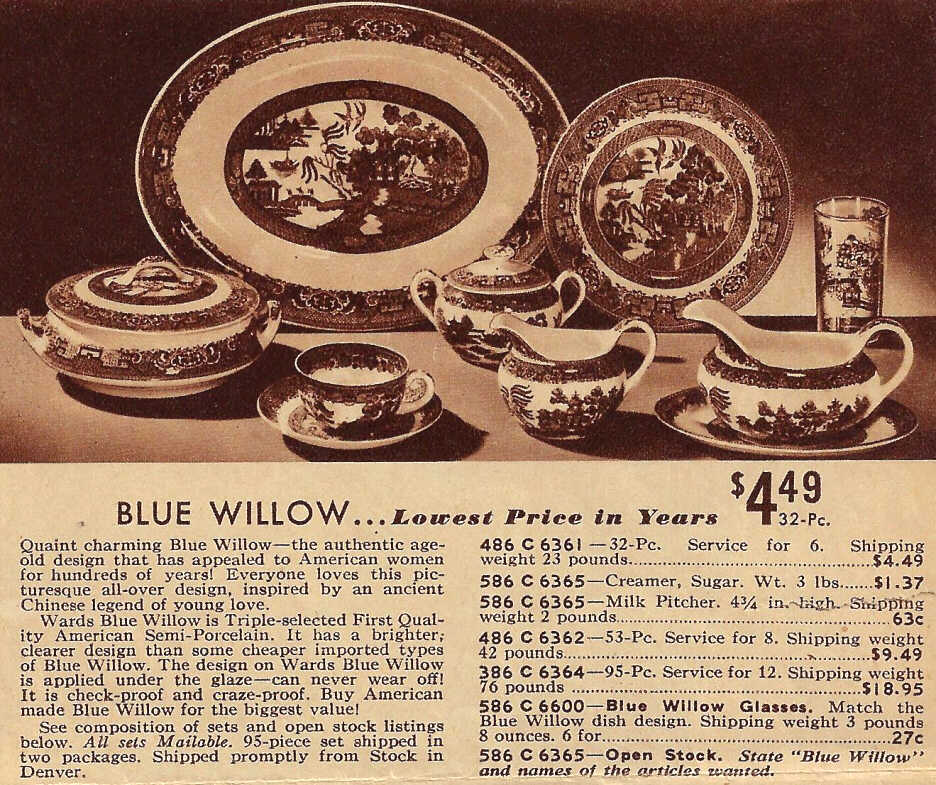
Sear's advertisement for Homer Laughlin's Blue Willow
After HLC was successful with the Willow line, they started using the transfer-printing process on other shapes. Coronet, Century, and Orleans are just a few that made use of different one-color transfer designs. There was one instance in early 1936 where Fiesta compartment plates were being considered with the Willow treatment for Woolworth's. (See this page.) Rhead noted making samples on March 27 of the same year, but these must have not gone any further than the planning stage.
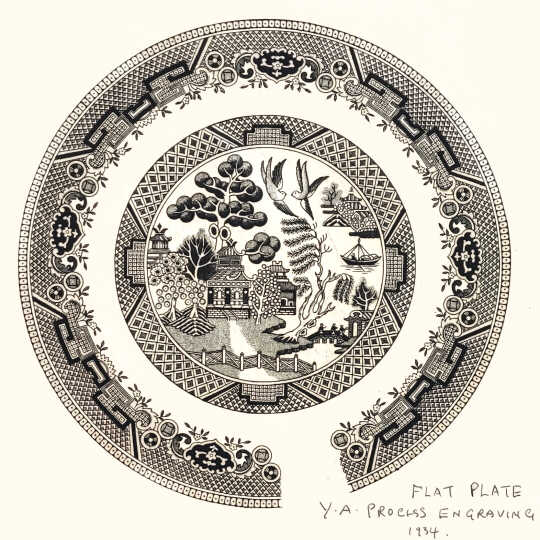
Original plan for HLC's Willow pattern |
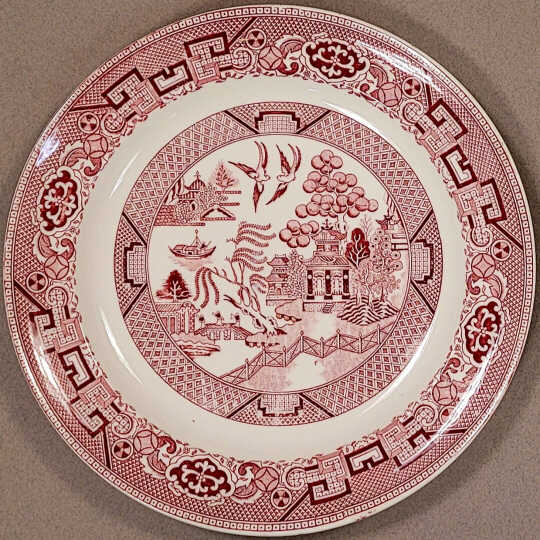
Pink Willow 10" plate |
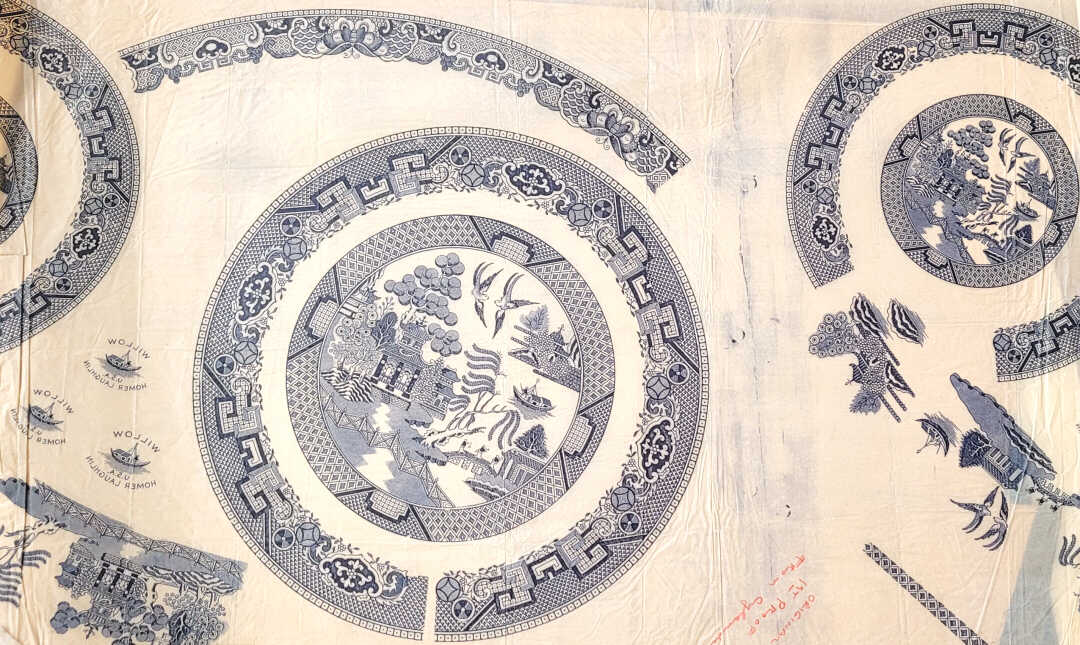
Uncut sheet of Blue Willow transfers
From the collection of the Fiesta® Tableware Company |
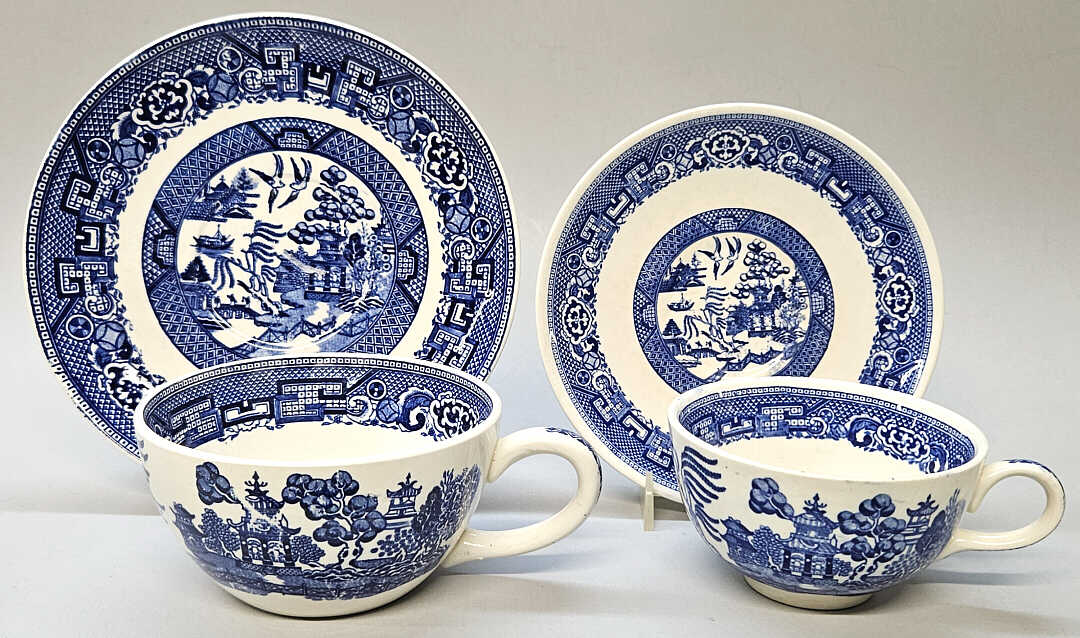
Blue Willow jumbo cup and saucer (left) and regular teacup and saucer (right)
Saucer diameters: jumbo: 7 ¼", tea: 6 ⅛". Cup diameters: jumbo: 4 ½", tea: 4"
|
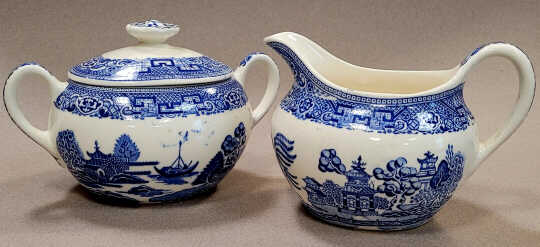
Blue Willow covered sugar and creamer |
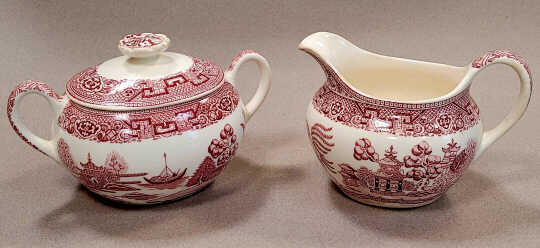
Pink Willow covered sugar and creamer |
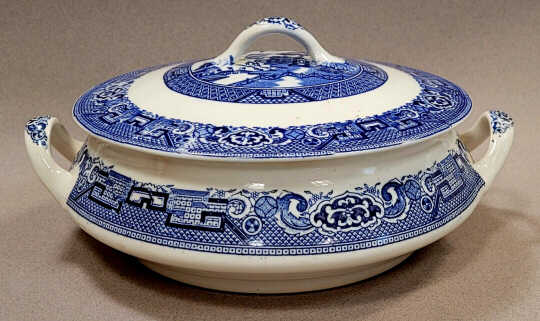
Blue Willow covered casserole, Empress shape |
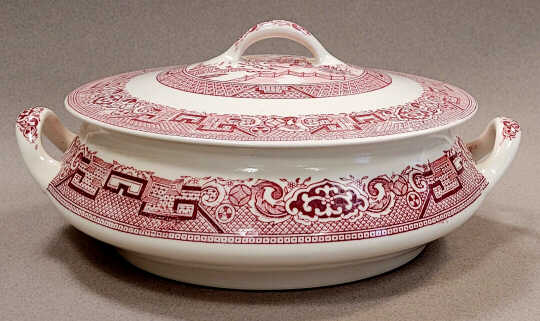
Pink Willow covered casserole, Empress shape |
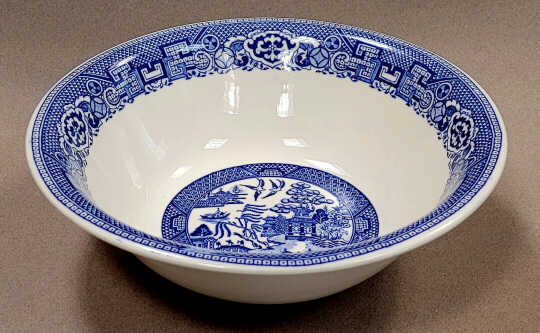
Blue Willow nappy |
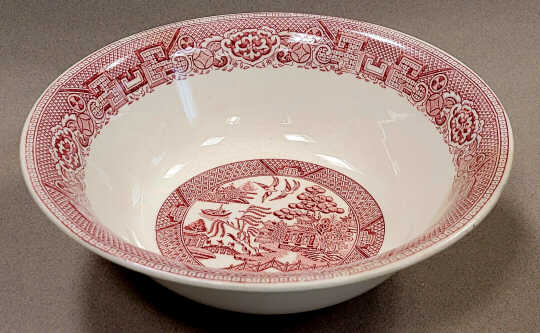
Pink Willow nappy |
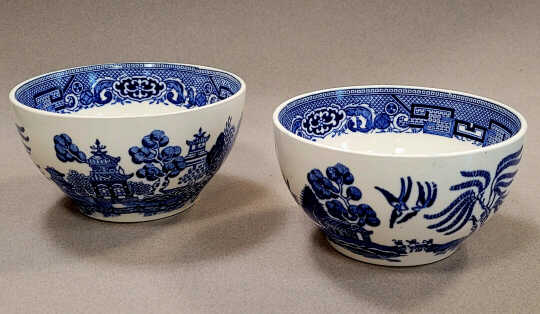
Blue Willow 36s bowls |
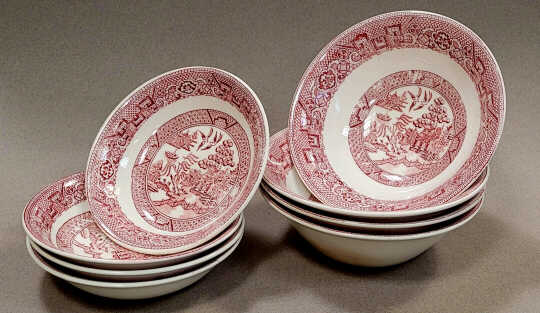
Pink Willow fruit cups and oatmeal bowls |
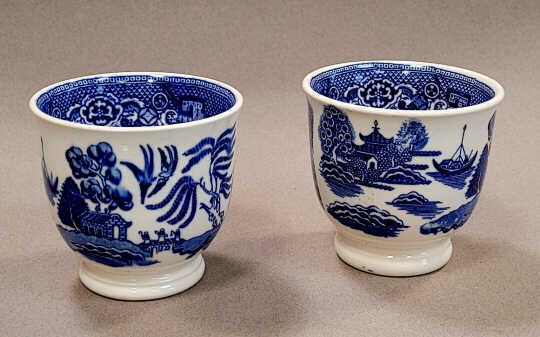
Blue Willow W.W. egg cups |
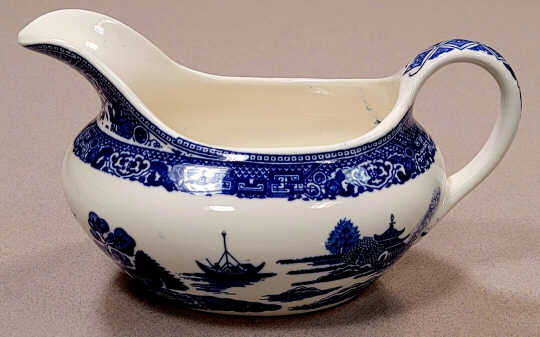
Blue Willow sauceboat |
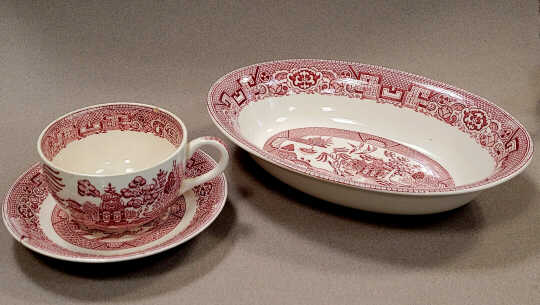
Pink Willow teacup, saucer, and oval baker |
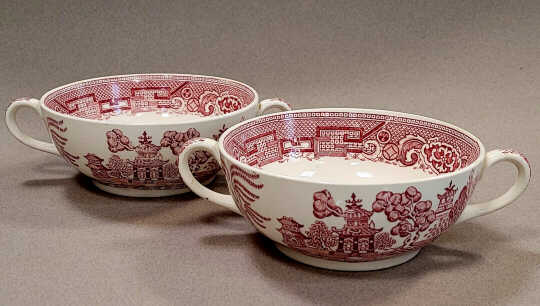
Pink Willow cream soup cups |
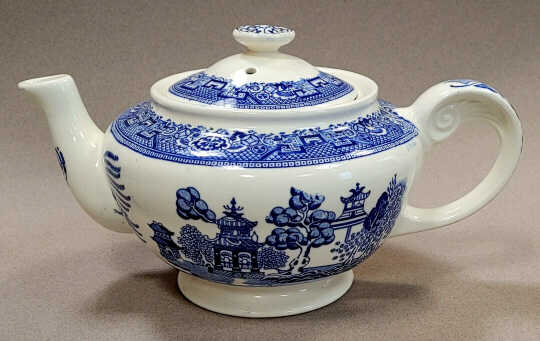
Blue Willow teapot |
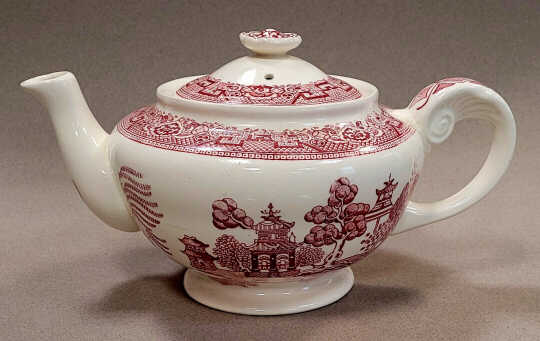
Pink Willow teapot |
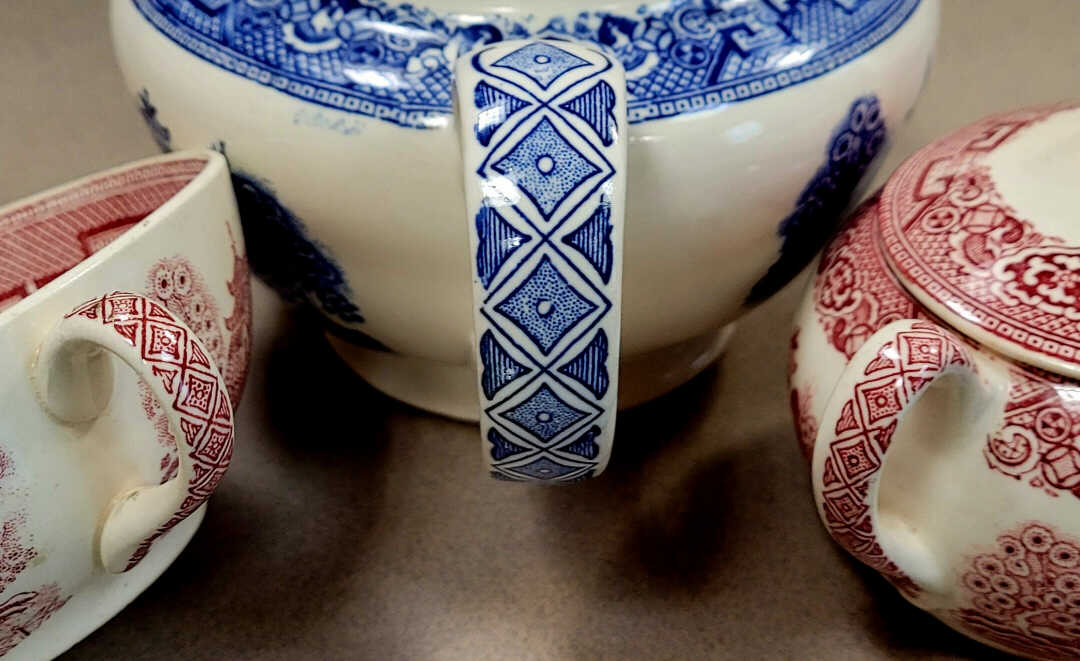
Handle patterns on Pink and Blue Willow |
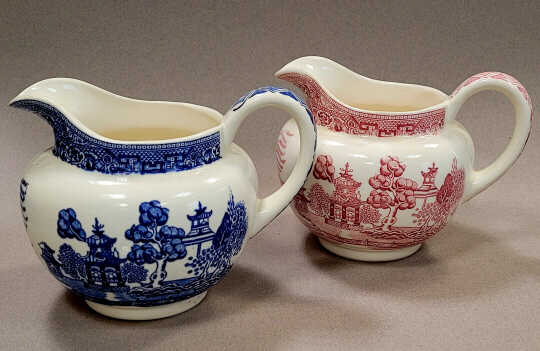
Blue and Pink Willow 1-qt. jugs |
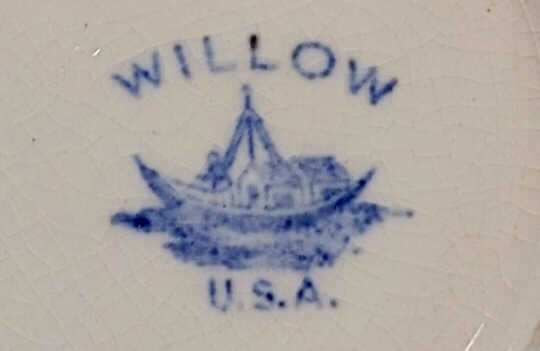
Homer Laughlin's Willow boat marking |
|